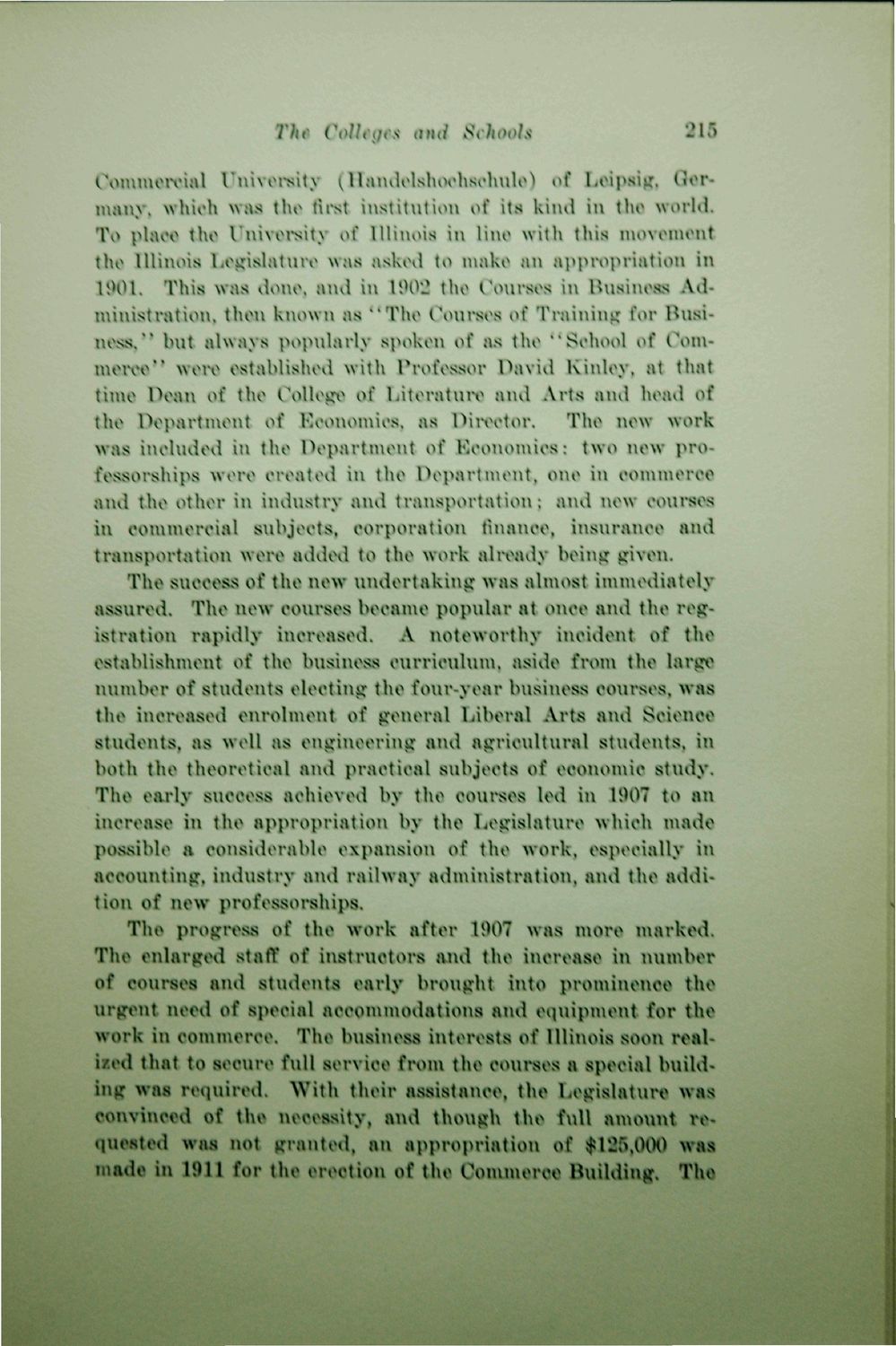| |
| |
Caption: Book - 16 Years (Edmund James)
This is a reduced-resolution page image for fast online browsing.

EXTRACTED TEXT FROM PAGE:
Th* Colhgea and Schools 215 Commercial University (Handolshoohsohule) of Loipxig, Germany, which was the first institution of its kind in the world. To place the University of Illinois in line with this movement the Illinois Legislature was asked to make an appropriation in 1901. This was done, and in 1902 the Courses in Business Administration, then known as "Tho Courses of Training for Business, 0 but always popularly spoken of as the "School of Commerce1* were established with Professor David Kinley, at that time Dean of the College of Literature and Arts and head of the Department of Economics, as Director, The new work was included in the Department of Economics: two new professorships were created in the Department, one in commerce and the other in industry and transportation; and now courses in commercial subjects, corporation finance, insurance and transportation were added to the work already being given. The success of the new undertaking was almost immediately assured. The new courses became popular at once and the registration rapidly increased. A noteworthy incident of the establishment of tho business curriculum, aside from the large number of students electing the four-year business courses, was the increased enrolment of general Liberal Arts and Science students, as well as engineering and agricultural students, in both the theoretical and practical subjects of economic study. The early success achieved by the courses led in 1907 to an increase in the appropriation by the Legislature which made possible a considerable expansion of the work, especially in accounting, industry and railway administration, and the addition of new professorships. The progress of the work after 1907 was more marked. The enlarged staff of instructors and the increase in number of courses and students early brought into prominence the urgent need of special accommodations and equipment for the work in commerce. The business interests of Illinois soon realized that to secure full service from the courses a special building was required. With their assistance, the Legislature was convinced of the necessity, and though the full amount re* quested was not granted, an appropriation of $125,000 was made in 1911 for the erection of the Commerce Building. The
| |